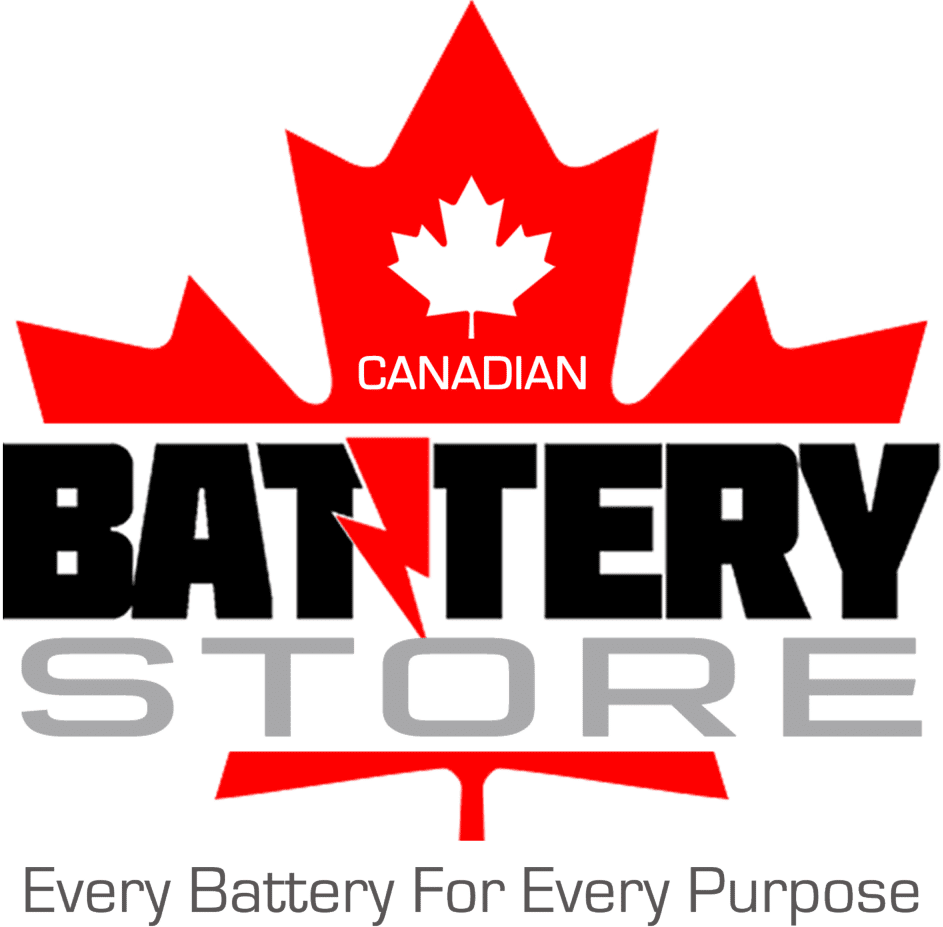Canadian Battery Store
Battery Recycling
WHERE CAN I RECYCLE MY BATTERIES?
Simply drop your batteries at any of store location.
Our Recycling service is a convenient and responsible way to dispose of used batteries. We offer a battery recycling program that allows customers to return their used batteries to us for proper disposal. We accept all types of batteries, from car and truck batteries to laptop and mobile phone batteries. Our experienced and knowledgeable staff will properly and safely dispose of the battery, ensuring that it does not end up in a landfill. We also provide an environmentally friendly option for businesses and individuals looking for an easy and responsible way to dispose of their used batteries. Our services are available to businesses, organizations, and individuals across the North America.
Our goal is to make battery recycling easy and accessible to everyone who needs it.
Batteries power today’s necessities — cellphones, small electronics
and laptop computers as well as numerous household devices. These
portable, versatile power sources figure significantly in making
technology accessible. Billions of batteries are purchased every year
according to statistics.
Not all these batteries are properly collected and recycled at the
end of their life, which increases the risk of releasing hazardous
substances and constitutes a waste of resources. Many of the components
of these batteries and accumulators could be recycled, avoiding the
release of hazardous substances to the environment and, in addition,
providing valuable materials to important products and production
processes.
Tossed in the trash, batteries can harm the environment; when
batteries have served their purpose, contact Battery World for safe
disposal.
Health and Environmental Risks
Battery materials pose no threat to human health when in use, but
batteries discarded improperly can have dangerous health and
environmental consequences because of the heavy metals the batteries
contain. About two-thirds of household waste is either incinerated or
placed in a landfill. Batteries that end up in a landfill can leach
chemicals and heavy metals into soil, groundwater, lakes and streams.
When incinerated, batteries release heavy metals into the air; these
metals also enter the environment in the ash created during
incineration. Realizing the dangers batteries pose to human health and
the environment, Battery World is keen to promote recycling and proper
disposal of Batteries.
Battery Recycling Programs
More than 80 percent of lead-acid and alkaline batteries we
distribute are often dropped back for safe disposal after their life
span at our Outlets. We offer Training to our resellers, staff and the
clients at large on the importance of disposing off used batteries.
For our Distributors in the Re-seller Programme, they earn more
loyalty points or get Extra Discount once they submit to us used
batteries for safe disposal.
“Never doubt that a small group of thoughtful, committed
citizens can change the world; indeed, it’s the only thing that ever
has.”Margaret Mead
Overview of Recycling of Process
The following is a brief discussion about how batteries of different
chemistries are physically recycled at the end-site recycling plant.
Lead Acid Battery Recycling
The battery is broken apart in a hammer mill; a machine that hammers
the battery into pieces. The broken battery pieces are then placed into a
vat, where the lead and heavy materials fall to the bottom and the
plastic floats. At this point, the polypropylene pieces are scooped away
and the liquids are drawn off, leaving the lead and heavy metals. Each
of the materials goes into a different recycling “stream”.
Plastic
Polypropylene pieces are washed, blown
dry, and sent to a plastic recycler where the pieces are melted together
into an almost liquid state. The molten plastic is put through an
extruder that produces small plastic pellets of a uniform size. The
pellets are sold to a manufacturer of battery cases and the process
begins again.
Lead
Lead grids, lead oxide, and other lead
parts are cleaned and heated within smelting furnaces. The molten melted
lead is then poured into ingot molds. After a few minutes, the
impurities float to the top of the still molten lead in the ingot molds.
These impurities are scraped away and the ingots are left to cool. When
the ingots are cool, they’re removed from the molds and sent to battery
manufacturers, where they’re re-melted and used in the production of
new batteries.
Sulfuric Acid
Old battery acid can be handled in two
ways: 1) The acid is neutralized with an industrial compound similar to
household baking soda. Neutralization turns the acid into water. The
water is then treated, cleaned, tested in a waste water treatment plant
to be sure it meets clean water standards. 2) The acid is processed and
converted to sodium sulfate, an odorless white powder that’s used in
laundry detergent, glass, and textile manufacturing.
Alkaline/Zinc Carbon/Zinc Air Batteries
These batteries are recycled in a specialized “room temperature,”
mechanical separation process where the battery components are separated
into 3 end products. These items are a) Zinc & Manganese
Concentrate, b) Steel, c) Paper & Plastic. All of these products are
put back into the market place for reuse in new products. These
batteries are 100% recycled.
Lithium Ion Batteries
Prior to the smelting process, plastics are separated from the metal
components. The metals are then recycled via a High-Temperature Metal
Reclamation (HTMR) process during which all of the high temperature
metals contained within the battery feedstock (i.e. nickel, iron,
manganese, and chromium) report to the molten-metal bath within the
furnace, amalgamate, then solidify during the casting operation. The
low-melt metals (i.e. zinc and cadmium) separate during the melting, The
metals and plastic are then returned to be reused in new products.
These batteries are 100% recycled.
Nickel-Cadmium, Nickel Metal Hydride Batteries
Prior to the smelting process, plastics are separated from the metal
components. The metals are then recycled via a High-Temperature Metal
Reclamation (HTMR) process during which all of the high temperature
metals contained within the battery feedstock (i.e. nickel, iron,
manganese, and chromium) report to the molten-metal bath within the
furnace, amalgamate, then solidify during the casting operation. The
low-melt metals (i.e. zinc and cadmium) separate during the melting, The
metals and plastic are then returned to be reused in new products.
These batteries are 100% recycled.
Lithium Batteries
The contents of the batteries are exposed using a shredder or a
high-speed hammer depending on battery size. The contents are then
submerged in caustic (basic not acidic) water. This caustic solution
neutralizes the electrolytes, and ferrous and non-ferrous metals are
recovered. The clean scrap metal is then sold to metal recyclers. The
solution is then filtered. The carbon is recovered and pressed into
moist sheets of carbon cake. Some of the carbon is recycled with cobalt.
The lithium in the solution (lithium hydroxide) is converted to lithium
carbonate, a fine white powder. What results is technical grade lithium
carbonate, which is used to make lithium ingot metal and foil for
batteries. It also provides lithium metal for resale and for the
manufacture of sulfur dioxide batteries.
Mercury Batteries
The batteries and heavy metals are recovered through a
controlled-temperature process. It’s important to note: the percentage
of mercuric oxide batteries is decreasing since the passage of the
Mercury-Containing Rechargeable Battery Management Act (The Battery Act)
of 1996. This act prohibits, or otherwise conditions, the sale of
certain types of mercury-containing batteries (i.e., alkaline-manganese,
zinc-carbon, button-cell mercuric-oxide and other mercuric-oxide
batteries)
“The environment, after all, is where we all meet, where
we all have a mutual interest. It is one thing that all of us share.
It is not only a mirror of ourselves, but a focusing lens on what we
can become.” -First Lady, Lady Bird Johnson




Leave a comment
Your email address will not be published. Required fields are marked *